He owns a dozen Ferraris and has loads of cash. Why can’t he buy the elusive $2.2-million LaFerrari Aperta?

Watch and jewelry kingpin David Lee shows off a few of his prized Ferraris -- supercars that he’s had to fight the company to buy. (Wally Skalij / Los Angeles Times)
- Share via
David Lee wanted the new Ferrari. He wanted it bad.
The multimillionaire watch and jewelry entrepreneur had his heart set on a LaFerrari Aperta, the open-top version of the ferocious Italian V12 super car. It would cost $2.2 million, and only 200 would be built.
Lee reckoned he had a good shot at getting one. After all, he already owned a garage full of Ferraris, many bought directly from the factory, part of a $50-million car collection he had spent years assembling.
He had a solid relationship with a powerful local Ferrari dealer. He had visited the Ferrari factory and attended the Ferrari driving school in Italy. He had purchased and restored vintage Ferraris and shown them at Pebble Beach and other exclusive concourse events.
He also recently had ordered four new Ferraris, hoping to improve his chances of getting on the exclusive and secret list of car collectors allowed to purchase one of the limited-run LaFerrari Aperta convertibles.
But Ferrari turned him down.
Undaunted, the collector persevered. His campaign to become a preferred Ferrari customer draws back the curtain on the mysterious world of ultra-elite luxury sports cars — where money alone isn’t enough.
I didn't want to play the game. But there's no other way to get into the queue.
— David Lee

Arguably the world’s most recognizable exotic carmaker, Ferrari has mastered the art of exclusivity.
It doesn’t make an SUV, like Lamborghini or Bentley, or sell an entry-level sports car, like Aston Martin or Maserati. Though it has licensed its logo for use on T-shirts, key fobs and other inexpensive items, the company has held the line on its elite automobiles.
Not all Ferraris cost a fortune, but even the regular, non-limited models aren’t cheap. The lowest-priced vehicle in the current lineup is the California T, at about $210,000.
By occasionally offering a high-priced, limited run of special sports cars, affordable to the 1% but offered only to a select few, the company adds catnip to its cache — rewarding its most ardent consumers while beckoning new buyers to more quotidian cars offered at lower prices and in higher volume.
It’s a successful supply-and-demand formula. Last year, the company shipped only 8,014 cars worldwide, but reported net revenue of $3.4 billion from sales of automobiles, automobile components and other sources. In other words, Ferrari can afford to be choosy about who gets its best cars.
Even when it sells a limited-run vehicle to one of the hand-picked few, the company still exerts pressure: Those lucky 400 allowed to buy a new LaFerrari hardtop — among them Gordon Ramsay, rocker Sammy Hagar and race car driver Felipe Massa — were asked to promise not to sell their cars for at least 18 months, to ensure that only the most passionate collectors were getting them.
“If you are not a current or previous Ferrari owner, you have no chance at all,” said collector David Christian, who for decades has raced and owned elite Italian cars. “I don’t care how much money you have.”
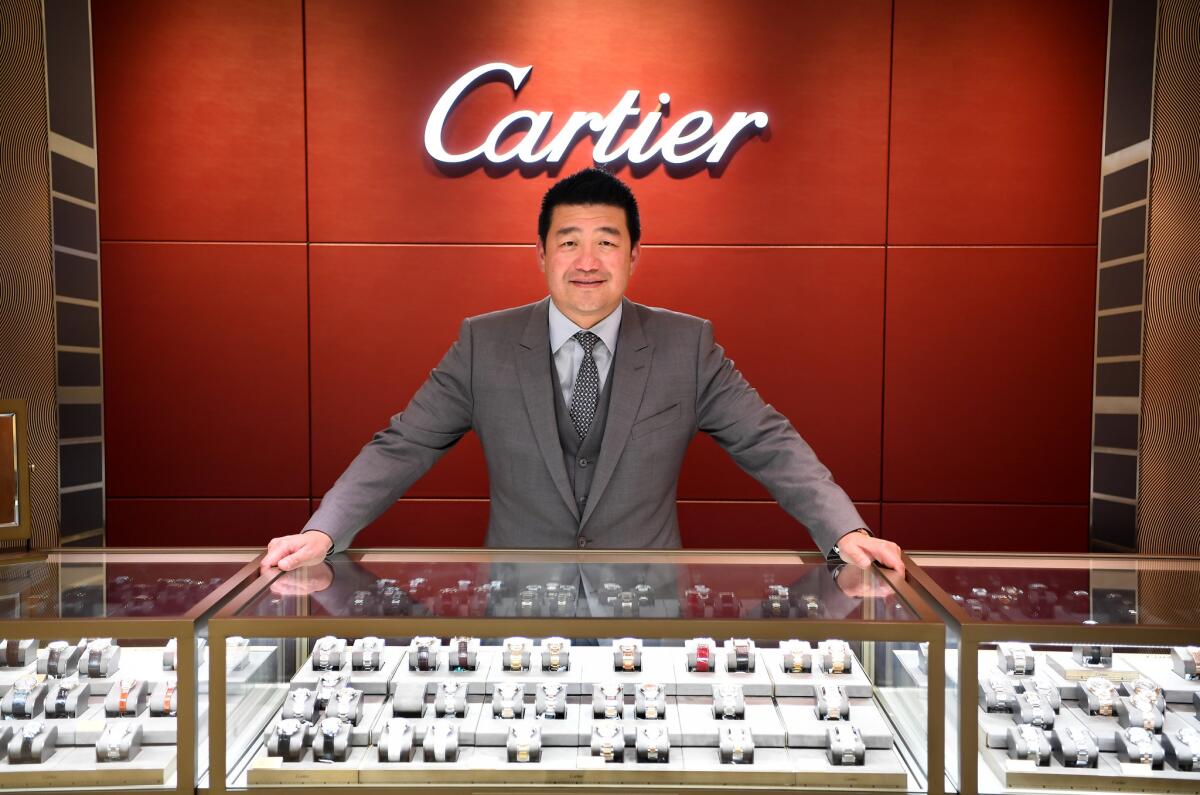
Lee doesn’t know exactly why he was denied a spot for an Aperta, and Ferrari declined to comment, except to say Lee was a valued client.
But some longtime observers of the elite sports car milieu said Lee’s look-at-me lifestyle, though it promotes the brand, embarrasses the company.
“The factory doesn’t like the publicity he creates,” one source close to Ferrari said. “They hate all the noise, and he loves all the noise.”
Collector and Petersen Automotive Museum board member Bruce Meyer sympathizes with the storied Italian company’s effort to control its own destiny.
“They’ve tried to keep their cars in the right hands, and they’ve done a good job of maintaining a brand of exclusivity,” said Meyer, who keeps several highly valuable Ferraris in his Beverly Hills stable.
Several observers who are close to the brand said Lee’s relentless campaign is working against him.
For starters, there’s his Instagram handle — @ferraricollector_davidlee — from which he posts almost daily doses of his cars, watches, wine and travel to more than 715,000 followers. In one recent post, he referred to fellow car aficionado Jay Leno as “my bro 24/7.” In another, Lee is pictured in his bright yellow Ferrari F12 TdF DSKL in front of an In-N-Out. “When I went up to the order taker,” he captioned the shot, “I told her that I wanted a strawberry shake, animal fries, and a Double Double DSKL style.”
He also has made his Ferraris the center of a monthly “Cars and Chronos” event at his Walnut store, which routinely draws hundreds of exotic cars.
Lee has turned away suggestions from advisors that he tone down his social media.
“My love of the brand and the enjoyment I get from sharing my special collection with the public is nothing but a good thing for the future of the brand,” he said. “If people at Ferrari think that is self-promoting, I can’t help that.”
Energetic, guileless and boyishly proud of his collection, Lee was bubbling with excitement as he escorted a visitor around the underground garage that houses his prized automobiles.
The USC graduate, married and the father of two, happily named investment figures that his fellow collectors won’t even discuss.
At one end of the garage was a rare 1964 250 Lusso Competizione, one of only four known to exist, that he valued at $5 million. At another was the Ferrari F1 race car driven by Michael Schumacher, which Lee said was worth $3 million. In a single line were his five Ferrari super cars, in matching red, which together he valued at more than $15 million. All of them are worth more than what he paid — typical of most Ferrari investments.
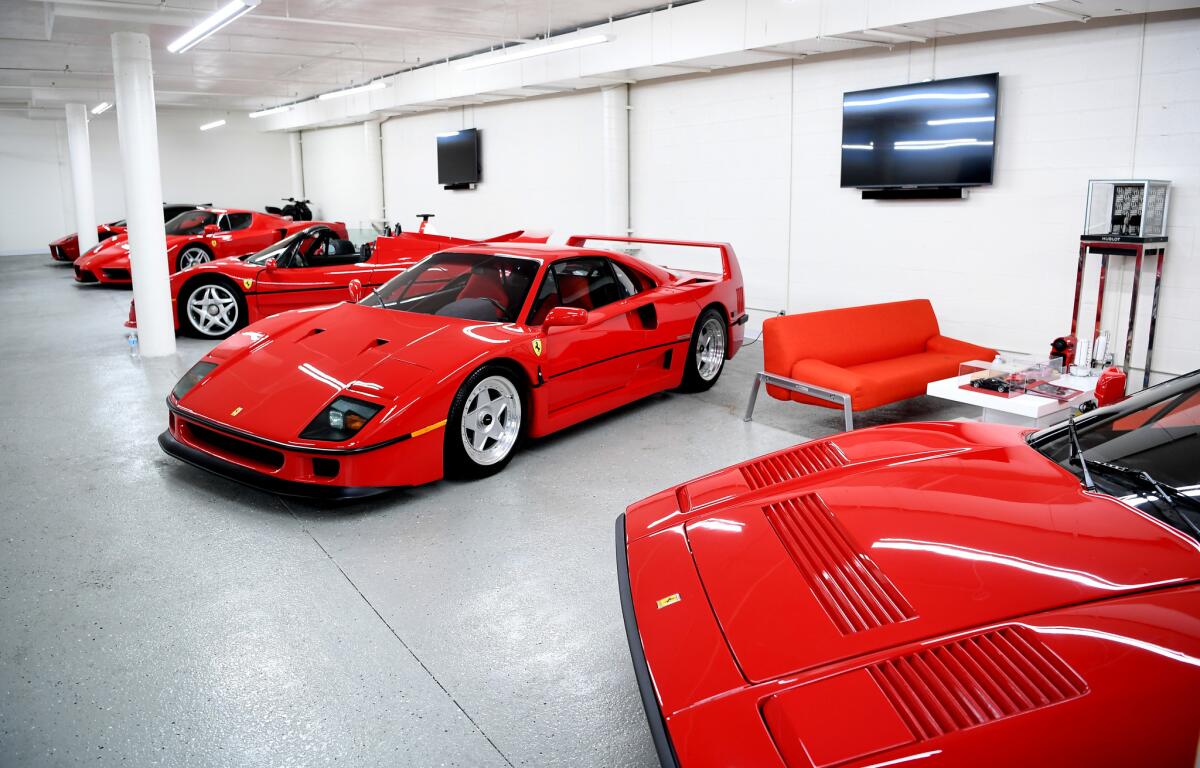
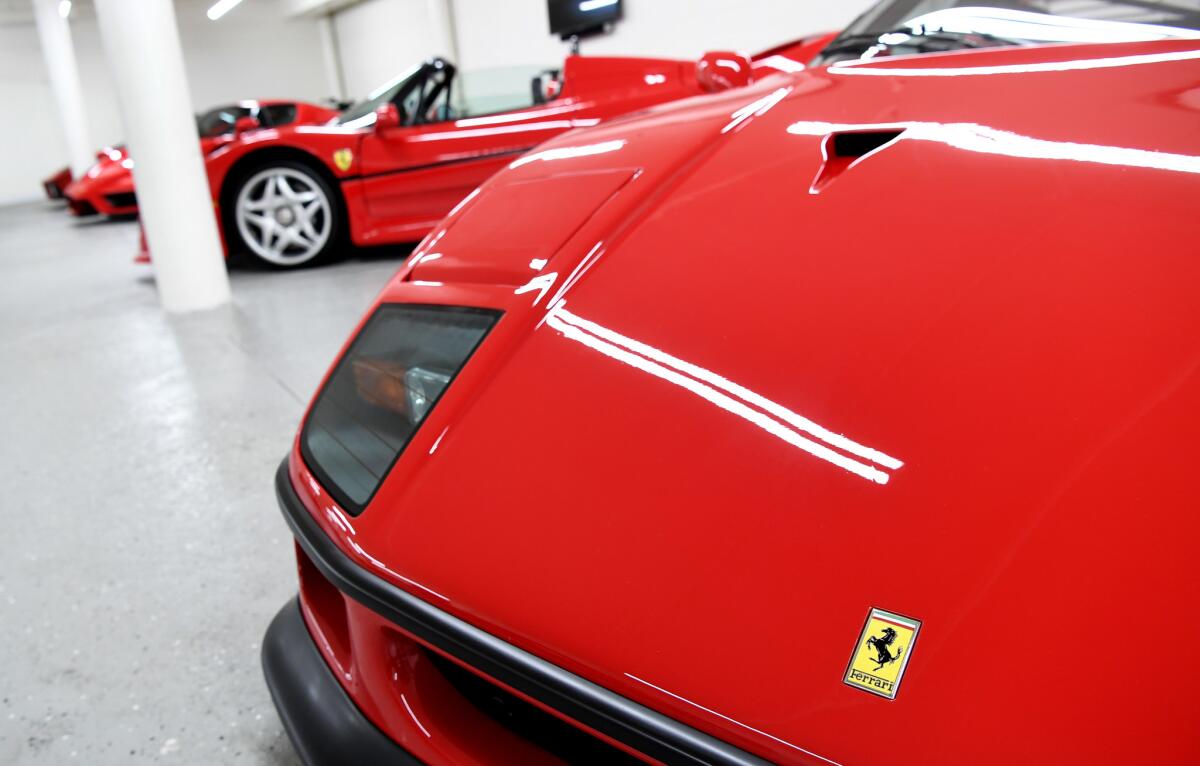
It was his late father, Hing Wa Lee, who founded the family jewelry business, starting as a humble jade cutter in Hong Kong and immigrating to the U.S. in the 1970s.
But it was David Lee who made it an empire, creating the Hing Wa Lee Jewelers watch and jewelry retail superstores, where wealthy Taiwanese and mainland Chinese clients stroll among glittering displays for Rolex, Cartier, Piaget, Breitling and Tag Heuer. Forbes recently valued the family’s jewelry and real estate businesses at $300 million.
Although Lee also owns a vintage Porsche Speedster, twin Rolls-Royce touring cars and million-dollar Pagani Huayra, Ferraris are his favorite, and his campaign to be a Ferrari man started early.
“I decided to be the guy who drives a Ferrari, seven days a week,” Lee, 50, said.
I decided to be the guy who drives a Ferrari, seven days a week.
— David Lee

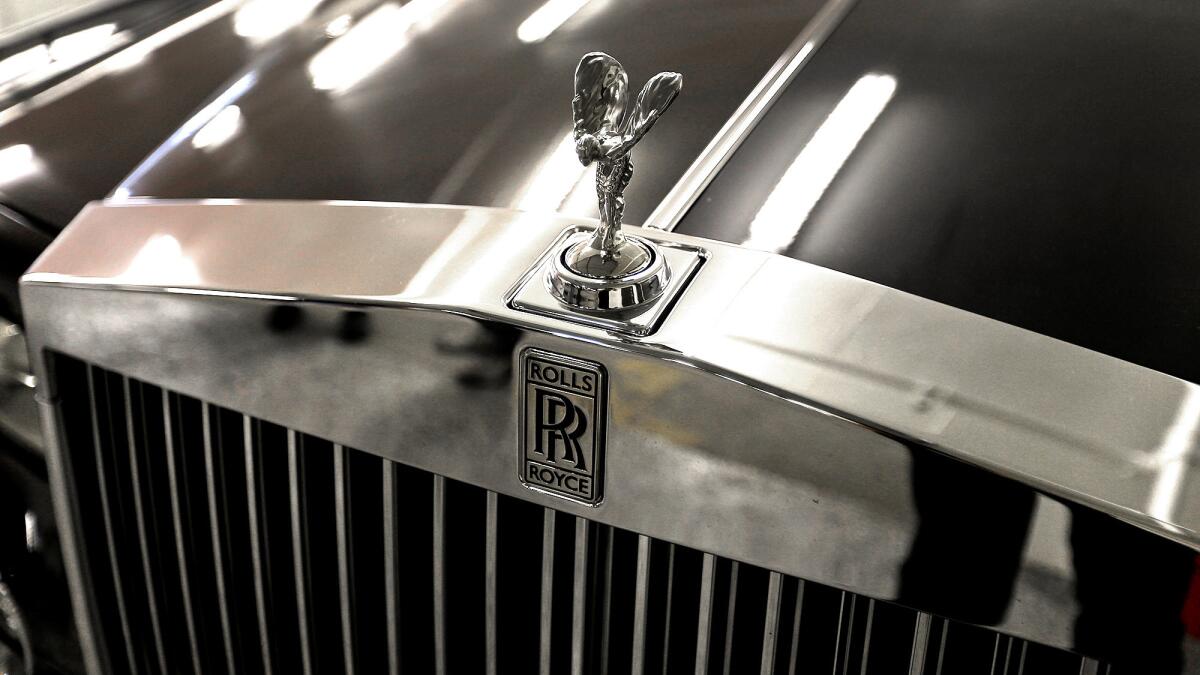
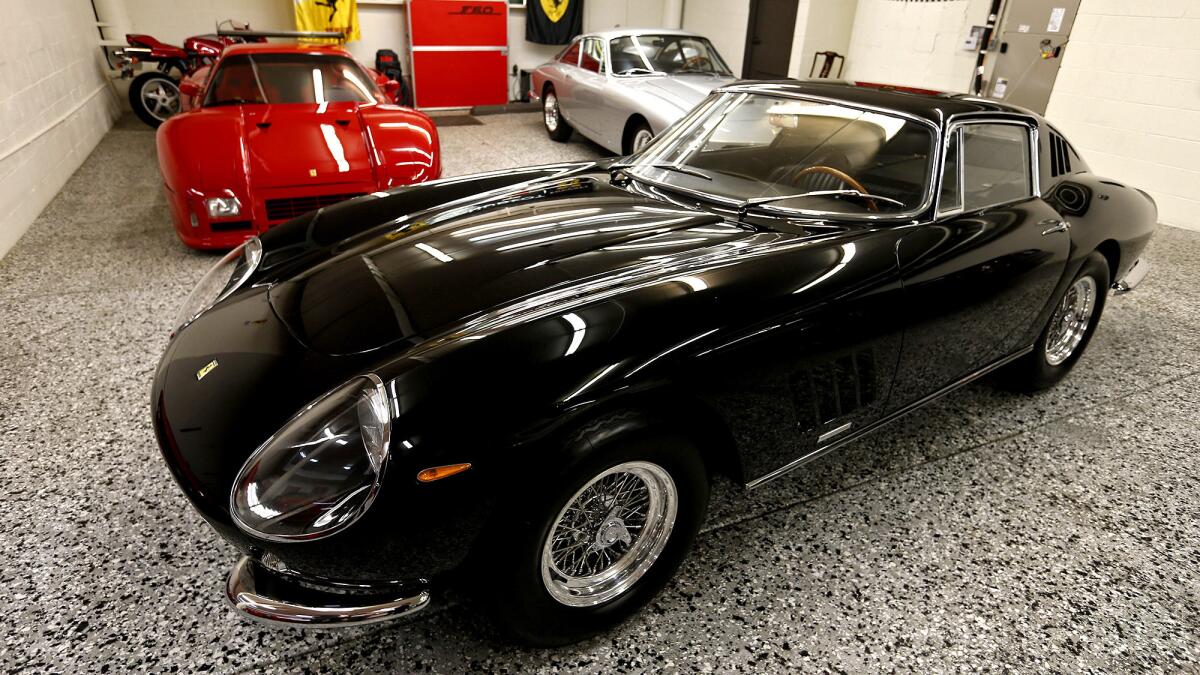
When he was new to the brand, Lee was surprised to learn money alone wasn’t enough to buy the Ferraris he was lusting after.
Told that he needed a closer relationship with the company, he said, he became friendly with Beverly Hills luxury car dealer Giacomo Mattioli, an Italian-born former Ferrari employee and ex-husband of a granddaughter of company founder Enzo Ferrari.
Lee began taking instruction on how to get into the club — an amorphous, loosely defined and ever-changing list of the company’s preferred customers. Under direction from Mattioli, who declined to comment, he began investing.
He bought a 1965 275 GTS, and later a 2003 Enzo. He bought a new 458 Speciale and a new 488 Spyder. Some of the cars didn’t really appeal to him.
“To buy a limited-edition car, you have to buy a few other cars that you don’t want,” he said. “I didn’t want to play the game. But there’s no other way to get into the queue.”
He spent $25,000 to join Ferrari’s driving club. He spent $12,000 for two days in the Ferrari driving school, he said, and invested heavily in the company’s pro racing program.
He took his cars to Pebble Beach, to the annual Concorso Italiano and brought a sampling of his super car set to this month’s San Marino Motor Classic.
To buy a limited-edition car, you have to buy a few other cars that you don't want.
— David Lee, on getting on the list
Lee even wrangled a limited-run LaFerrari after the company didn’t sell him one directly.
Left off the list for the $1.4-million hardtop, Lee commissioned a car contact to find him a used one — and to try to find a way around Ferrari’s 18-month sales prohibition.
One owner was in line for one of the first LaFerraris in North America but was about to go through a divorce. Not wanting the yet-to-be-delivered vehicle to be part of the settlement, Lee said, the owner agreed to transfer possession to Lee but delay the paperwork so that, technically, they could both abide by Ferrari’s rule.
Lee confessed that he paid “much, much more” than $1.4-million, but insisted that was less than the car is currently worth.
“The market value is $4 million now,” he said. “My investment is sound.” (Six months later, he estimated the car’s value at more than $5 million.)
But he incurred the company’s wrath, when Ferrari reps spotted him driving it at a Pebble Beach event. They made him agree not sell it for at least 18 months.
Lee was undaunted by the scolding. And, maybe, he’s finally starting to wear the company down.
He received the first 488 convertible delivered to North America and was first in line to place orders for limited runs of a specially designed line of F12 sports cars, of which only 500 were to be made. He also was able to place an early order for the new 812 Superfast, the most powerful Ferrari offered to the public.
But when the first LaFerrari Apertas were delivered this spring, Lee didn’t get one.
Shamed? Silenced? Not at all.
“I will keep sharing my experiences as an owner with the public and drive them as much as I can,” he said. “I don’t see how that could be worse than collectors who hide their collections in a garage and never drive them. That’s the real shame.”
ALSO
Amazon-Whole Foods deal sends shares of grocery chains, big-box stores into dive
Where do SpaceX and other aerospace companies find engineers? On the race track




